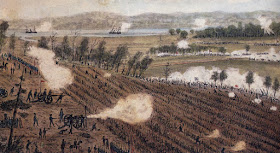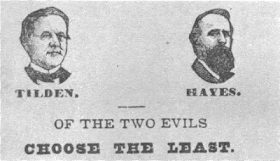Ok, so maybe Sergeant Sonny Donnowitz wasn't a real person, but there was someone tougher and more battle hardened than the "Bear Jew." His name was Sam Dreben and he was a complete bad ass. Completely fearless and commanded respect from everyone around him. Known as the "Fighting Jew" Dreben fought in several different and unrelated theaters of battle on every continent except Africa. But why? Was it because he was a dare devil? Loved the thrill of war? Or perhaps just had a death wish? I think it is more than that, something maybe from his childhood that made him always want to fight the good fight, maybe he just had a sense a duty which has since fell by the way side.
worldwar1.com
Sam Dreben was born June 1, 1878 in Poltava Russia, present day Ukraine. Born to Jewish parents Sam's future in Russia was not promising. Knowing this he made two attempts at running away, the furthest he ever made it was Germany. At 18, he made his way to London, hung out for a bit and then made his way to the states by the winter of 1899. By that summer Dreben had enlisted in the U.S. Army and was being shipped to the Philippines with the 14th Infantry Regiment. The mission, restore and keep order in the new acquired land. The rebellion was led by Emilio Aguinaldo who wanted the United States out of the Philippines. There Dreben fought amongst some of America's greatest military heroes, Teddy Roosevelt, Arthur MacArthur and John Pershing. In the end the, the American forces suppressed the rebellion, officially making the Philippines a territory of the United States. Yet that was Dreben's first taste of battle and I guess he liked it because this would be the beginning of an illustrious military career.
american-buddha.com
After seeing action in the Philippines, Dreben was sent to Beijing during the Boxer Rebellion. There he was part of a protection detail for American business interests in the area. While there Dreben was released from military service. Working odd jobs and finding everyday life a little dull, he looked to enlist with a Japanese recruiter to fight in the Russo-Japanese War, but was called back to Fort Bliss in Texas, in 1904. There Dreben would train with the newest and latest piece of military equipment, the machine gun. Dreben took the machine gun like a duck to water. He remained in Fort Bliss until 1907 when he was released from service for a second time. Looking for work he made his way to the Panama Canal Zone. Unable to get anything going, Dreben's reputation as a tough guy landed him several gigs fighting with several revolutionary causes. Mainly through Central America, he fought in Guatemala, Honduras, Nicaragua and Mexico. In Guatemala, Dreben received a million dollar wound, he was shot in the buttocks. Oddly enough that would be the only time he was wounded in combat.
shootingtimes.com
Dreben would eventually make his way back to the states and re-enlist back into the army. His next major action was when he took part in the Punitive Expedition (1916). The Expedition goal was to go into Mexico and capture (or kill) Pancho Villa for a raid he orchestrated in New Mexico. This would not be the first time Dreben would be involved with Villa. Prior to the Expedition, Dreben and Villa worked together in Mexico. They spent several months in Mexico looking for Villa but the search was fruitless. Then in 1917 with the U.S.'s entry into WWI, you could bet Dreben was one of the first in line to sign up. He enlisted with the 141st Infantry Regiment of the 36th Infantry Division. Before leaving Dreben took a wife, Helen Spence and started a family. Sadly as Dreben was leaving for France, news reached him of the passing of his daughter. It is unknown how Dreben reacted to the news, but he continued on to France.
netdotcom.com
When in France, Derben continued to do what
he did best, kick some serious tail. He took part in the battle of St.
Etienne (1918). He served under General Jack Perishing and he was held
in his highest regards. By the end of the war Dreben went home with some
serious hardware, and left a bunch of Krauts crying for their mutters.
Aside from the miles of street cred he continued to grow, he was also
awarded the Distinguished Service Cross, the Croix de Guerre and the
Medaille Militaire. After the war Dreben was looking to get some
R&R. He did have to deal with a cheating wife, which he then
divorced. However, aside from the marital issue, Dreben ran a successful
insurance business in El Paso, Texas. But just when life seemed to slow
down a bit, Dreben's achievements called him back into action. In 1921,
Dreben and several other men were deputized by the El Paso P.D. to
illegally extradite a prisoner from Juarez, Mexico. The plan ran a rye
and Dreben and his merry men were arrested by Mexican authorities, only
to be released three days later after Uncle Sam flexed a diplomatic
little muscle. After the spat in Mexico, Dreben remarried and moved to
California for a new start. Then in 1925 Dreben tragically died from an
accidental dose of medicine. As news of his death spread all the major
newspapers ran articles honoring the hero.
unm.edu
Sam Dreben is a true American hero. A man
who symbolizes heroism with every bone in his body. His service to his
county was never forced and always selfless. He built a reputation as a
tough guy and his bravery was world renowned. Today we would call men
like Dreben, soldiers of fortune, a gun for hire
or even a mercenary. But Dreben is a unique character and exemplifies
that sense of adventure not really seen anymore.You can see that perhaps
Dreben could have been an inspiration not just for Sergeant Sonny
Donnowitz character, but for all the characters in Inglorious Bastards.
But what does that say about Dreben? The characters in that film are larger than
life, and so was Dreben. Today, Dreben is still on of the most unknown
people in military history. The man from Russia, whose mother had hopes
he'd become a rabbi, is one toughest men to ever step onto
a battlefield. Whether it on a field in France, a dock in Beijing or a
jungle in Honduras, Dreben never shied away from the service for
others.Today, Sam Dreben should be up there with our other military
heroes and in equal or great standings. An American hero through and
through, but is slowing becoming another casualty to History and his
achievements only belonging to the ages.







































